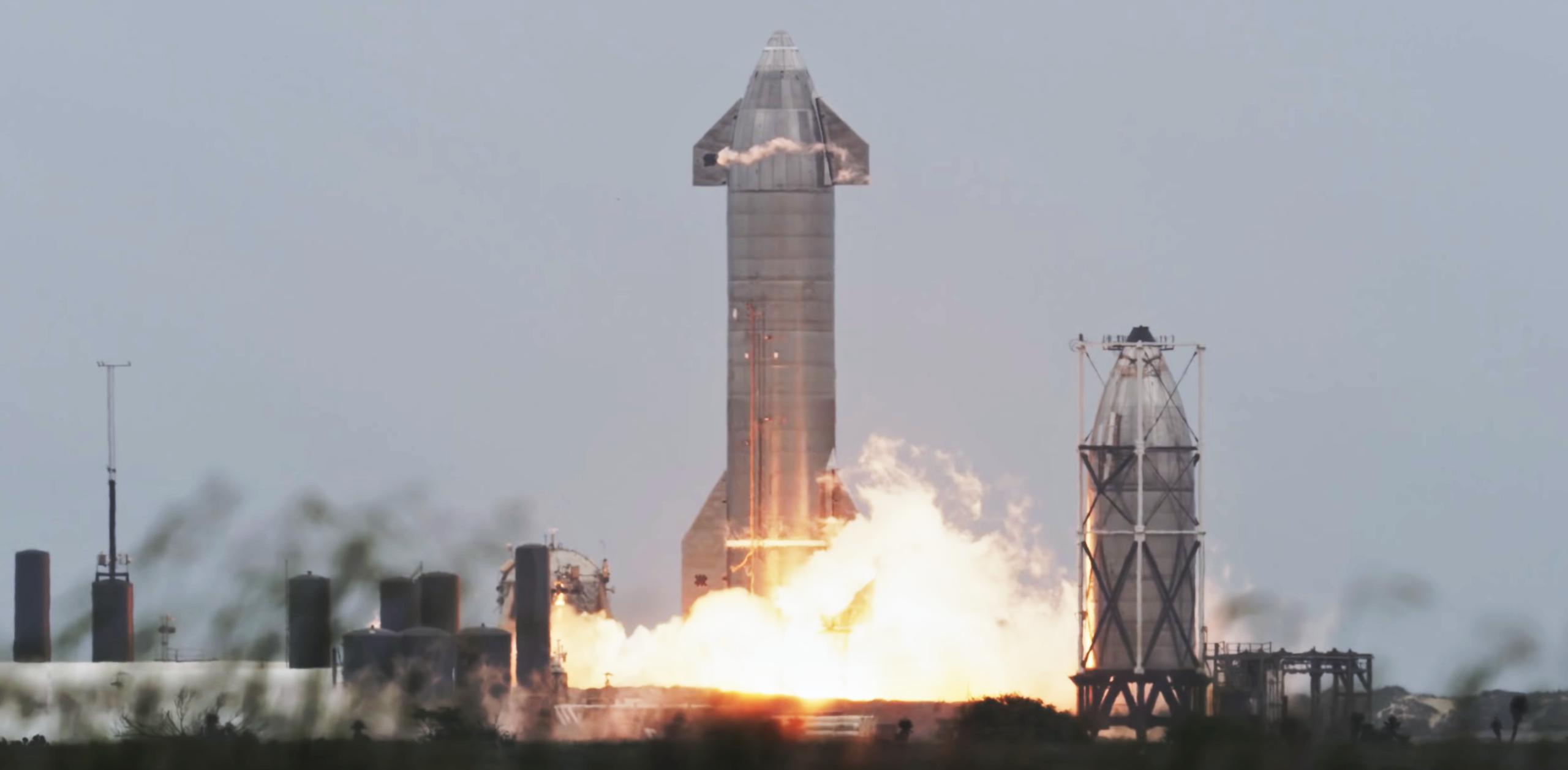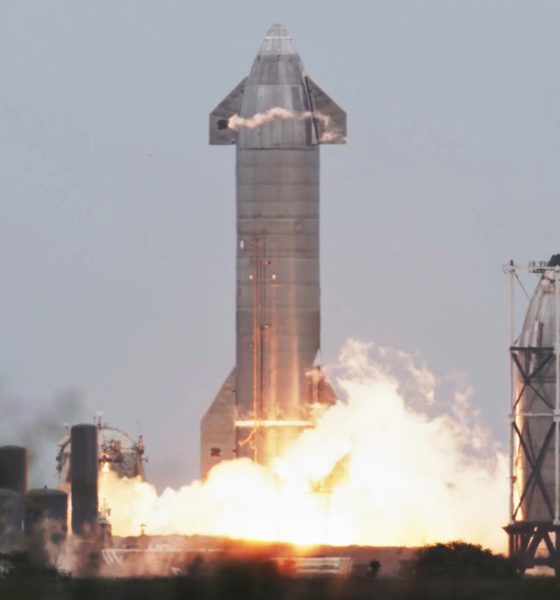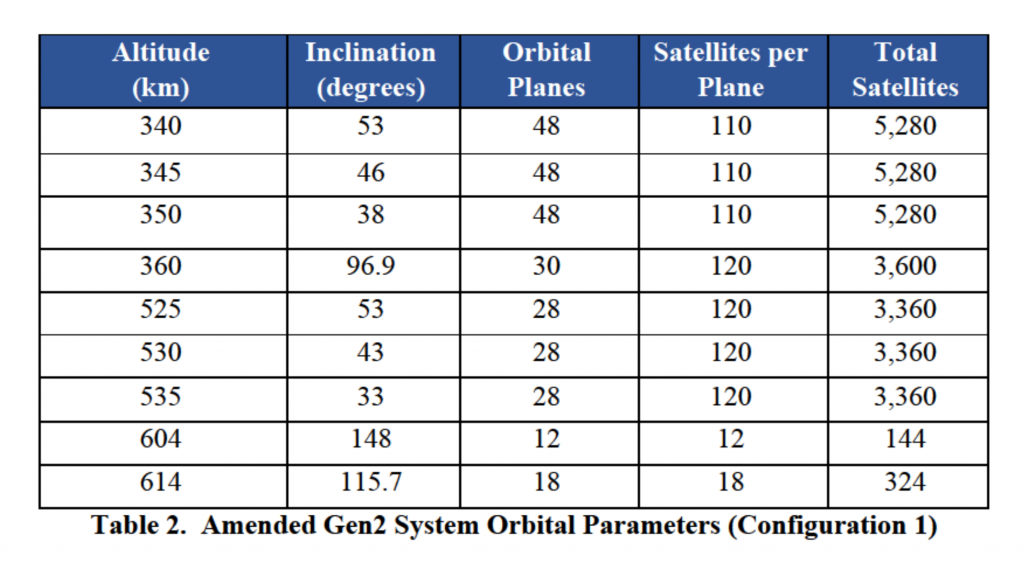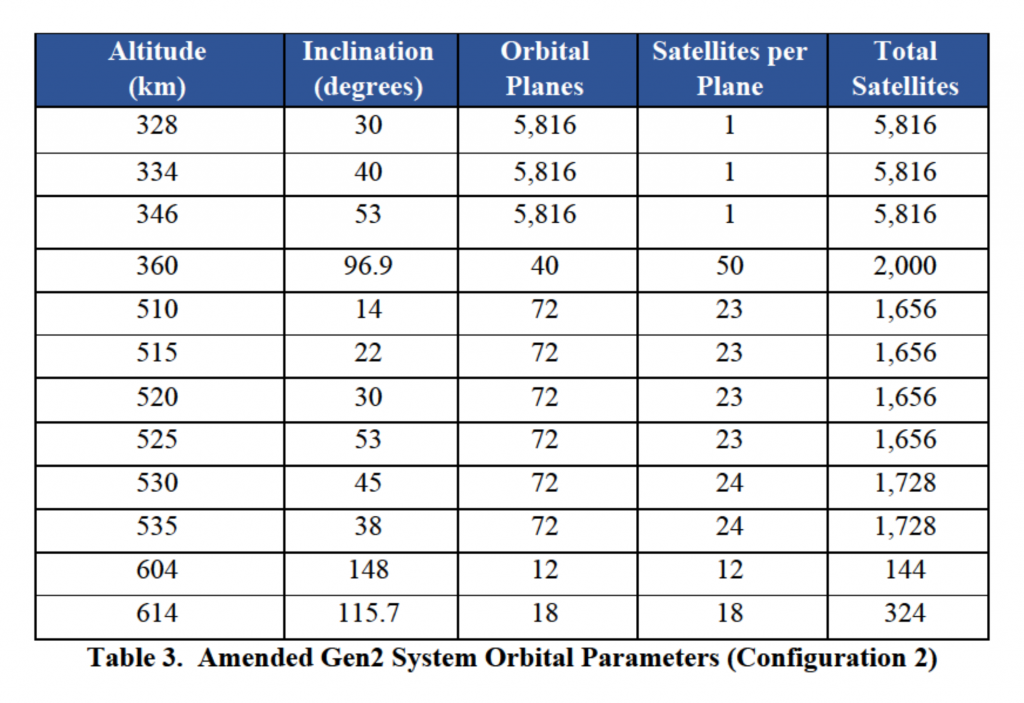

News
SpaceX says Starship will launch the next generation of Starlink satellites
SpaceX has submitted an FCC application modifying what it calls Starlinks Generation 2 (Gen2) constellation and laying out plans to launch some 30,000 new satellites with its fully reusable Starship rocket.
SpaceX’s latest Starlink Gen2 modification request comes more than a year after the company first submitted an application for an FCC license for the launch of some 30,000 next-generation satellites and almost two years after SpaceX first officially floated the idea in October 2019. Now, some 18 months after kicking off significant Starlink Gen2 constellation and satellite design work, SpaceX has significantly modified its previous request and the design of the constellation to better adapt to the potential of Starship and the connectivity needs of the world.
These changes to Gen2 Starlink satellites were advanced a couple of weeks ago as @thesheetztweetz reported back then: https://t.co/LxXcp5Hpq4— Dark Energy ?️? (@Alejandro_DebH) August 19, 2021
Thanks to a number of details included in SpaceX’s modified Starlink Gen2 application, it’s possible to paint a fairly detailed picture of what the future constellation might look like. First and foremost, in its modification, SpaceX included two possible constellation “configurations”: one where Starship is ready for regular orbital launches in the near term and one in which Starlink Gen2 satellites are ready for flight before the next-generation rocket.
In the former configuration, Starship would launch virtually all Starlink Gen2 satellites. In the former, SpaceX would supplement Starship’s availability with Gen2 Falcon 9 launches. All told, both configurations max out around 29,990 Gen2 (2.0, V2.0, etc) Starlink satellites. It’s not entirely clear but it appears that both Config 1 and Config 2 constellations would rely on the same Gen2 satellite design, which SpaceX says will be significantly larger and more powerful than existing Starlink V1.0 satellites, which weigh approximately 260 kg (~570 lb) each, produce ~3 kW of solar power, and have a maximum bandwidth of ~18 gigabits per second (Gbps).


In contrast, Starlink Gen2 satellites, which SpaceX says Starship will launch on a single ‘plane’ basis (meaning one plane per launch), appear to be several times larger. Assuming Starship is capable of launching 100-150 tons (~220,000-330,000 lb) to the low Earth orbits Starlink Gen2 is targeting, each Starship will launch up to 120 satellites – each weighing approximately 850-1250 kg. SpaceX’s original June 2020 Gen2 filing implied that the next generation of Starlink satellites would have up to three times the maximum bandwidth of existing V1.0 satellites (~50+ Gbps). In its modified August 2021 Gen2 filing, SpaceX says those satellites will be even more capable, still.
In other words, SpaceX seems to be implying that future Starlink satellites will likely weigh around one ton (~2200 lb) each, be capable of a maximum individual bandwidth of some 60-80 Gbps, and have solar arrays capable of supplying something like 15-20 kilowatts to power an army of antennas. If SpaceX ultimately wins FCC approval, the ~30,000 satellite Starlink Gen2 constellation as proposed would have a total instantaneous bandwidth of at least 500 terabits per second (Tbps) over land (~1800 Tbps including ocean coverage). As of 2020, the total installed bandwidth of global internet infrastructure was estimated to be 600 Tbps.

News
Tesla FSD fleet is nearing 7 billion total miles, including 2.5 billion city miles
As can be seen on Tesla’s official FSD webpage, vehicles equipped with the system have now navigated over 6.99 billion miles.

Tesla’s Full Self-Driving (Supervised) fleet is closing in on almost 7 billion total miles driven, as per data posted by the company on its official FSD webpage.
These figures hint at the massive scale of data fueling Tesla’s rapid FSD improvements, which have been quite notable as of late.
FSD mileage milestones
As can be seen on Tesla’s official FSD webpage, vehicles equipped with the system have now navigated over 6.99 billion miles. Tesla owner and avid FSD tester Whole Mars Catalog also shared a screenshot indicating that from the nearly 7 billion miles traveled by the FSD fleet, more than 2.5 billion miles were driven inside cities.
City miles are particularly valuable for complex urban scenarios like unprotected turns, pedestrian interactions, and traffic lights. This is also the difference-maker for FSD, as only complex solutions, such as Waymo’s self-driving taxis, operate similarly on inner-city streets. And even then, incidents such as the San Francisco blackouts have proven challenging for sensor-rich vehicles like Waymos.
Tesla’s data edge
Tesla has a number of advantages in the autonomous vehicle sector, one of which is the size of its fleet and the number of vehicles training FSD on real-world roads. Tesla’s nearly 7 billion FSD miles then allow the company to roll out updates that make its vehicles behave like they are being driven by experienced drivers, even if they are operating on their own.
So notable are Tesla’s improvements to FSD that NVIDIA Director of Robotics Jim Fan, after experiencing FSD v14, noted that the system is the first AI that passes what he described as a “Physical Turing Test.”
“Despite knowing exactly how robot learning works, I still find it magical watching the steering wheel turn by itself. First it feels surreal, next it becomes routine. Then, like the smartphone, taking it away actively hurts. This is how humanity gets rewired and glued to god-like technologies,” Fan wrote in a post on X.
News
Tesla starts showing how FSD will change lives in Europe
Local officials tested the system on narrow country roads and were impressed by FSD’s smooth, human-like driving, with some calling the service a game-changer for everyday life in areas that are far from urban centers.

Tesla has launched Europe’s first public shuttle service using Full Self-Driving (Supervised) in the rural Eifelkreis Bitburg-Prüm region of Germany, demonstrating how the technology can restore independence and mobility for people who struggle with limited transport options.
Local officials tested the system on narrow country roads and were impressed by FSD’s smooth, human-like driving, with some calling the service a game-changer for everyday life in areas that are far from urban centers.
Officials see real impact on rural residents
Arzfeld Mayor Johannes Kuhl and District Administrator Andreas Kruppert personally tested the Tesla shuttle service. This allowed them to see just how well FSD navigated winding lanes and rural roads confidently. Kruppert said, “Autonomous driving sounds like science fiction to many, but we simply see here that it works totally well in rural regions too.” Kuhl, for his part, also noted that FSD “feels like a very experienced driver.”
The pilot complements the area’s “Citizen Bus” program, which provides on-demand rides for elderly residents who can no longer drive themselves. Tesla Europe shared a video of a demonstration of the service, highlighting how FSD gives people their freedom back, even in places where public transport is not as prevalent.
What the Ministry for Economic Affairs and Transport says
Rhineland-Palatinate’s Minister Daniela Schmitt supported the project, praising the collaboration that made this “first of its kind in Europe” possible. As per the ministry, the rural rollout for the service shows FSD’s potential beyond major cities, and it delivers tangible benefits like grocery runs, doctor visits, and social connections for isolated residents.
“Reliable and flexible mobility is especially vital in rural areas. With the launch of a shuttle service using self-driving vehicles (FSD supervised) by Tesla in the Eifelkreis Bitburg-Prüm, an innovative pilot project is now getting underway that complements local community bus services. It is the first project of its kind in Europe.
“The result is a real gain for rural mobility: greater accessibility, more flexibility and tangible benefits for everyday life. A strong signal for innovation, cooperation and future-oriented mobility beyond urban centers,” the ministry wrote in a LinkedIn post.
News
Tesla China quietly posts Robotaxi-related job listing
Tesla China is currently seeking a Low Voltage Electrical Engineer to work on circuit board design for the company’s autonomous vehicles.

Tesla has posted a new job listing in Shanghai explicitly tied to its Robotaxi program, fueling speculation that the company is preparing to launch its dedicated autonomous ride-hailing service in China.
As noted in the listing, Tesla China is currently seeking a Low Voltage Electrical Engineer to work on circuit board design for the company’s autonomous vehicles.
Robotaxi-specific role
The listing, which was shared on social media platform X by industry watcher @tslaming, suggested that Tesla China is looking to fill the role urgently. The job listing itself specifically mentions that the person hired for the role will be working on the Low Voltage Hardware team, which would design the circuit boards that would serve as the nervous system of the Robotaxi.
Key tasks for the role, as indicated in the job listing, include collaboration with PCB layout, firmware, mechanical, program management, and validation teams, among other responsibilities. The role is based in Shanghai.
China Robotaxi launch
China represents a massive potential market for robotaxis, with its dense urban centers and supportive policies in select cities. Tesla has limited permission to roll out FSD in the country, though despite this, its vehicles have been hailed as among the best in the market when it comes to autonomous features. So far, at least, it appears that China supports Tesla’s FSD and Robotaxi rollout.
This was hinted at in November, when Tesla brought the Cybercab to the 8th China International Import Expo (CIIE) in Shanghai, marking the first time that the autonomous two-seater was brought to the Asia-Pacific region. The vehicle, despite not having a release date in China, received a significant amount of interest among the event’s attendees.








